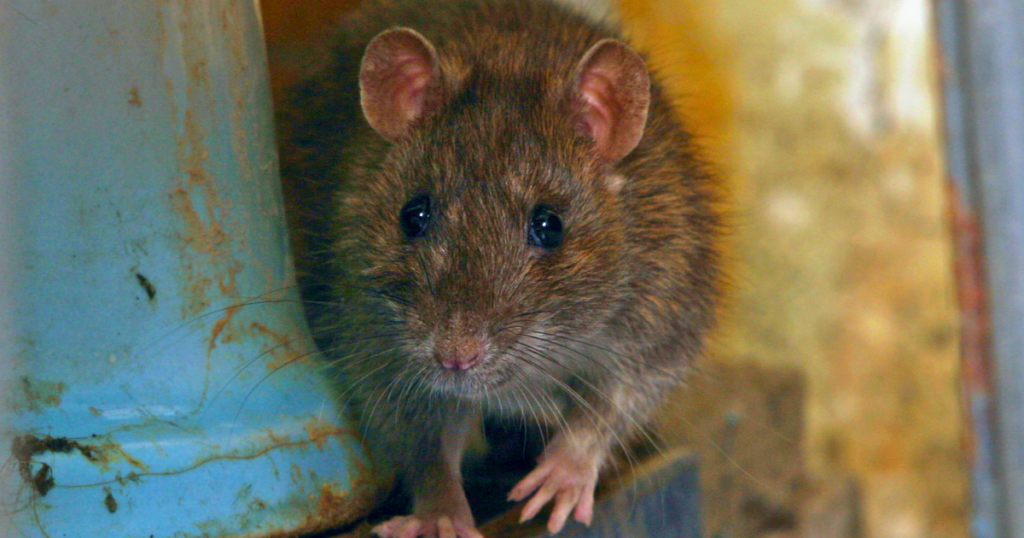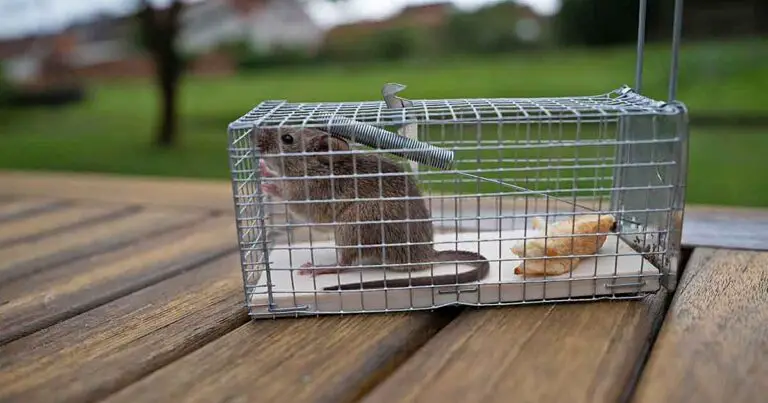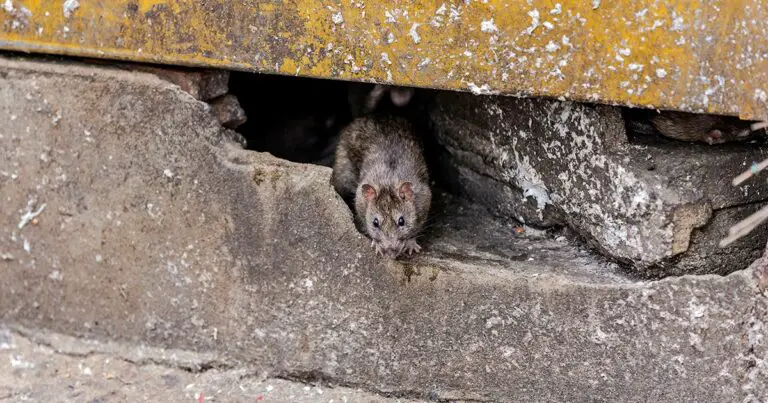How High Can Rats Jump? (Amazing Jumping Abilities of Rats)
Just how high can rats jump? Rats are known for their incredible athleticism and agility, and the brown rat is no exception. Researchers have conducted tests on these rodents to determine their jumping abilities, and the results have been impressive. Brown rats can jump up to 77 centimeters, or nearly 2.5 feet, off the ground, and they are also capable of leaping over four feet on slopes that are horizontal or downward.
One reason for the brown rat’s exceptional jumping skills is its powerful hind legs. These limbs are designed for speed and agility, allowing the rat to quickly change direction and accelerate when needed. Additionally, rats are incredibly adaptable and can adjust their jumping technique depending on the situation. For example, when jumping on a downward slope, a rat may use its tail to help maintain balance and control.
Rats are one of the most adaptable animals in the world, with a remarkable ability to thrive in a wide range of environments. These rodents are able to navigate a wide range of environments with ease, and their athleticism allows them to evade predators and find food and shelter in even the most challenging conditions.
How High Can Rats Jump? Understanding their Jumping Abilities
Rats are known to be incredibly agile and fast creatures. They can squeeze through small openings, run across wires, and even climb walls. But one of their most impressive skills is their jumping ability. If you’re dealing with a rat infestation or just curious about their physical abilities, you may be wondering: How high can rats jump?
The answer is not a straightforward one, as the jumping height of rats can vary depending on several factors, such as their age, health, and breed. However, on average, a rat can jump up to 36 inches (91 cm) vertically and 48 inches (122 cm) horizontally. This means that if you have a fence or wall that’s less than four feet tall, rats can easily jump over it.
So, just how high can rats jump? The jumping abilities of rats play a crucial role in their survival and reproduction. In the wild, rats use their jumping skills to escape predators, find food, and mate. In urban areas, rats may use their jumping abilities to access human homes and buildings or to evade traps and poison.

How Rats Jump
To understand how high rats can jump, we need to take a closer look at their anatomy. Rats have powerful hind legs that they use to push off the ground when they jump. Their tails also play a crucial role in maintaining balance and steering in mid-air. Rats are agile and flexible, allowing them to jump and turn quickly to avoid obstacles or predators.
Rats use several techniques to propel themselves into the air. One technique involves pushing off the ground with their hind legs while using their tail to maintain balance. Another technique involves using their tail to generate upward force, which allows them to jump higher than they would otherwise.
Factors Affecting Rat Jumping Ability
The ability of rats to jump can be influenced by a variety of factors, both internal and external.
Internal factors, such as age and health, can affect a rat’s ability to jump. As rats age, their muscles and bones may become weaker, making it more difficult for them to jump as high or far as they once could. Similarly, rats that are malnourished or sick may have reduced muscle strength or coordination, which can also impact their jumping ability.
External factors can also play a role in rat jumping ability. For example, the type of surface that rats are jumping on can have a significant impact on their performance. Rats are able to jump higher and farther on softer surfaces, such as soil or grass, compared to harder surfaces like concrete or metal. The texture and incline of the surface can also affect jumping ability – rats are better able to jump on rough or uneven surfaces that provide more grip.
Finally, a rat’s jumping ability can also be influenced by genetic factors. Different species of rats may have evolved different jumping abilities based on the environments in which they live. For example, rats that live in trees may have longer tails and stronger hind legs to help them jump and climb more efficiently.
Effects of Jump Training on Bone Hypertrophy in Rats
A study investigated the effects of jump training and run training on bone hypertrophy in female Fischer 344 rats of varying ages, including 3, 6, 12, 20, and 27 months. The rats were divided into jump training, run training, or sedentary groups and trained for 8 weeks.
Results showed that jump training was more effective than run training for bone hypertrophy in all age groups, as the fat-free dry weights of the femur and tibia were significantly greater in the jump-trained rats than in the run-trained and sedentary rats.
Interestingly, the effects of jump training on bone hypertrophy were not limited by age, as it was found to be effective in both young and old rats. In addition to increasing bone weight, jump training also increased the length and diameter of the femur and tibia. These findings suggest that jump training may be a beneficial exercise for individuals looking to improve their bone health, regardless of age.
The Evolutionary Advantage of Rat Jumping
One of the primary advantages of rat jumping is that it allows them to escape from predators quickly and efficiently. In the wild, rats are preyed upon by a variety of animals, including snakes, birds of prey, and larger mammals. By being able to jump high and far, rats can quickly move out of reach of predators and seek shelter in trees, bushes, or other hiding places.
Another advantage of rat jumping is that it allows them to navigate uneven or challenging terrain more easily. Rats are found in a variety of environments, from forests and grasslands to urban areas, and they need to be able to move quickly and efficiently across a range of surfaces. Jumping allows rats to move quickly over obstacles and rough terrain, such as fallen logs, rocks, and other debris.
Rats have also developed specialized jumping techniques that allow them to conserve energy and move more efficiently. For example, rats may use a “springing” technique, where they push off the ground with their hind legs and use the momentum to propel themselves forward. They may also use a “parachuting” technique, where they spread their limbs and use their tail to control their descent, allowing them to land more softly and reduce the risk of injury.
Overall, the evolutionary advantage of rat jumping is clear – it allows them to escape from predators, navigate challenging terrain, and move quickly and efficiently in their natural environments. By studying how rats have evolved to jump, we can gain insights into their behavior and biology, and develop more effective methods of pest control and conservation.
Rat Jumping in Urban Environments
In urban environments, rats often encounter a variety of obstacles, such as walls, fences, and other structures. To navigate these obstacles, rats have developed specialized jumping techniques. For example, rats have been observed using a “pole-vaulting” technique, where they use their hind legs to push off of a vertical surface and launch themselves into the air. They may also use a “wall-climbing” technique, where they climb up a vertical surface using their claws and then jump off of the top of the wall.
Rats in urban environments also face the challenge of avoiding human activity. To do this, they have developed a variety of behavioral adaptations, such as avoiding well-lit areas and only coming out at night. Rats may also use jumping to quickly move from one hiding spot to another, allowing them to avoid detection by humans and other predators.
Understanding how high rats can jump and how they navigate urban environments can help researchers develop more effective methods of pest control. For example, by identifying the types of surfaces that rats are most likely to use for jumping, researchers can design barriers or deterrents that make it more difficult for rats to move around. Additionally, by understanding the factors that influence rat behavior in urban environments, such as lighting and noise levels, researchers can develop pest control strategies that are tailored to specific environments.
Rat Jumping Myths and Misconceptions
Several myths and misconceptions about rat jumping ability have been perpetuated over the years. These myths can lead to misunderstandings about the capabilities of rats and can also make it more difficult to develop effective pest control strategies. Let’s take a closer look at some of these myths and misconceptions:
Myth: Rats can jump up to 6 feet or higher.
This is one of the most common myths about rat jumping ability, but it is not supported by scientific evidence. As we mentioned earlier, research has shown that rats can jump up to 3 feet vertically from a standing position. While some rats may be able to jump slightly higher than this, it is unlikely that any rat could jump 6 feet or more.
Myth: Rats can jump over human heads.
This myth is also not supported by scientific evidence. While rats are agile and can jump higher than their own body height, they are unlikely to be able to jump over a human head. In fact, rats typically prefer to avoid humans and will often try to hide or escape when they encounter people.
Myth: Rats can fly.
While it may seem like rats can fly when they jump from high places, they do not actually have the ability to fly. Rats are able to glide for short distances using their tails, but they cannot sustain flight like a bird or insect.
Myth: Rats can jump farther than they can run.
This myth is actually true – rats are able to jump farther than they can run. This is because jumping allows rats to cover more ground quickly and efficiently, especially when navigating uneven terrain or obstacles.
By debunking these myths and misconceptions, we can gain a better understanding of the true capabilities of rats and develop more effective pest control strategies. It’s important to remember that while rats may be agile and adaptable, they are still animals that are susceptible to pest control methods. By using evidence-based strategies and understanding how rats behave and move, we can work towards better managing and controlling rat populations in both urban and rural environments.
Conclusion
Rat jumping ability is a remarkable feat of nature, allowing these adaptable animals to survive and thrive in a wide range of environments. While rats may not be the highest jumpers in the animal kingdom, their jumping ability is still impressive given their small size. Understanding the factors that influence rat jumping ability, as well as how rats have evolved to jump, can help researchers better understand these animals and develop more effective pest control strategies.
In urban environments, rat jumping behavior has been shown to adapt to the challenges presented by human structures and activity. By understanding how rats navigate these environments, researchers can develop more effective methods of pest control and reduce the risk of rat-borne diseases.
Overall, the jumping abilities of rats are just one example of the remarkable adaptability of these animals. By studying how rats jump, we can gain insights into their behavior and biology, and develop new ways to manage and control rat populations in both urban and rural environments.








